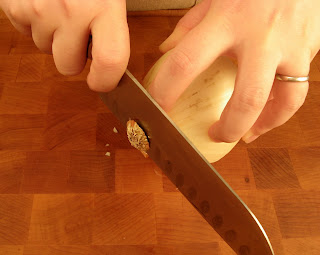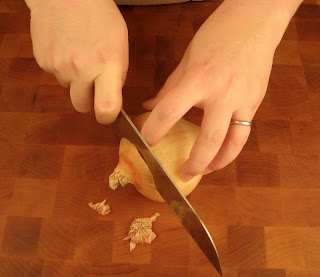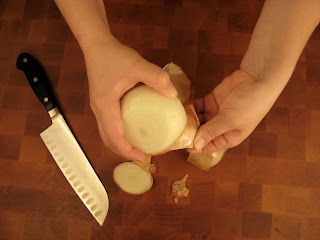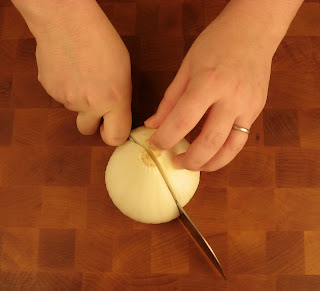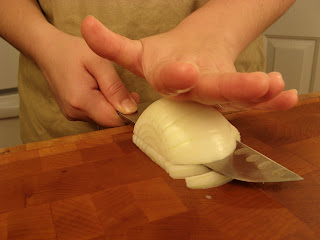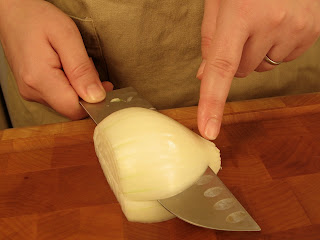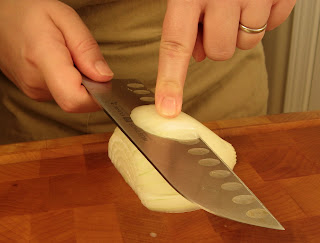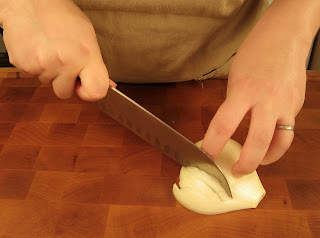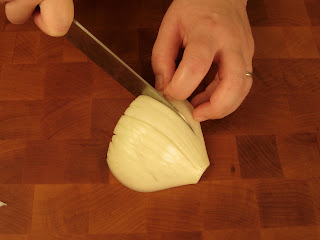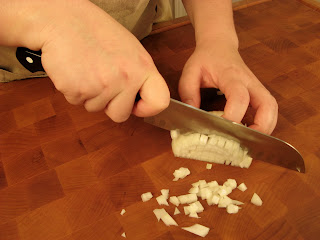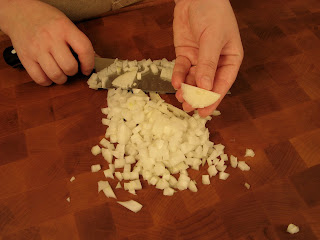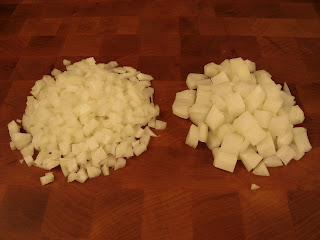When I first started dating my husband, I made a huge error in judgement—I baked a chocolate cake for no occasion at all. Actually, I made the mistake of baking three chocolate cakes. It was sort of an accident, the recipe I used made so much batter that I had to divide it between one regular-size cake pan and two smaller ones. I baked the cakes and frosted each one with sweetened whipped cream. When he came over, I fed him cake. And then I sent him home with a cake of his very own…Oops. He jumped to the obvious conclusion: with me around, there would always be cake. He expects multiple cakes, cakes all the time, cakes just for him, to share with no one else. A feeling of cake entitlement. I think he married me just for the cake.
Though my husband wouldn’t understand it, meeting this sort of demand for cake isn’t always easy. So I’ve devised an indulgent and fantastically quick and easy chocolate cake recipe that tastes a lot like devil’s food cake. But my recipe requires no sifting of dry ingredients, no creaming of butter and sugar and eggs, the ingredients don’t even have to be at room temperature. The buttercream frosting’s a snap too.
 Quickie Chocolate CakePrintable RecipeFor the cake:
Quickie Chocolate CakePrintable RecipeFor the cake:4 ounces (1 stick) unsalted butter, plus more for greasing the pan
8 ounces all-purpose flour
5 ounces sugar
5 ounces light brown sugar
2 ounces cocoa powder
1 teaspoon baking powder
1 teaspoon baking soda
½ teaspoon fine sea salt
2 large eggs
½ cup sour cream
½ cup buttermilk
1 ½ teaspoons vanilla extract
2 ounces semisweet chocolate, chopped or scant 1/3 cup semisweet chocolate chips
For the buttercream frosting:5 ounces semisweet chocolate, chopped or 2/3 cup semisweet chocolate chips
6 ounces (1 ½ sticks) unsalted butter, at room temperature
¾ cup powdered sugar
½ teaspoon vanilla extract
Make the cake:Preheat the oven to 375˚F. Butter a 9-inch square cake pan. Whisk together the flour, sugar, brown sugar, cocoa powder, baking powder, baking soda, and salt in a large bowl. Whisk together the eggs, sour cream, buttermilk, and vanilla in a medium bowl. Combine the butter and chocolate in a small bowl, place the bowl over a small pan of simmering water, and heat, stirring frequently, until melted. Whisk into the egg mixture. Add the egg mixture to the flour mixture and stir until just combined. Transfer to the cake pan and spread evenly.

Bake for 35 to 40 minutes, or until the edges of the cake start to shrink away from the pan and a toothpick inserted into the center comes out clean. Let the cake cool in the pan for about 10 minutes. Invert onto a cooling rack and finish cooling completely.
Make the buttercream frosting:Place the chocolate into a small bowl, place the bowl over a small pan of simmering water, and heat, stirring frequently, until melted. Let cool slightly. In a mixer fitted with a paddle attachment, beat the butter on medium until light and creamy. Add the powdered sugar and vanilla and beat until blended. Add the chocolate and continue to beat until smooth, stopping the mixer once or twice to scrape down the sides of the bowl.
Assemble the cake:Transfer the cake to a cake plate. Spread the frosting evenly over the top and sides of the cake, swirling decoratively. Cut into portions and serve.
Makes 1 9-inch square cake, serving one husband, or if you manage to hide it from the husband, 9 to 12 other people. Keeps well and stays moist for several days tightly sealed at room temperature. The recipe can be doubled and baked in a 9×13-inch rectangular cake pan—it’s a tight fit, but I’ve done it.



















































